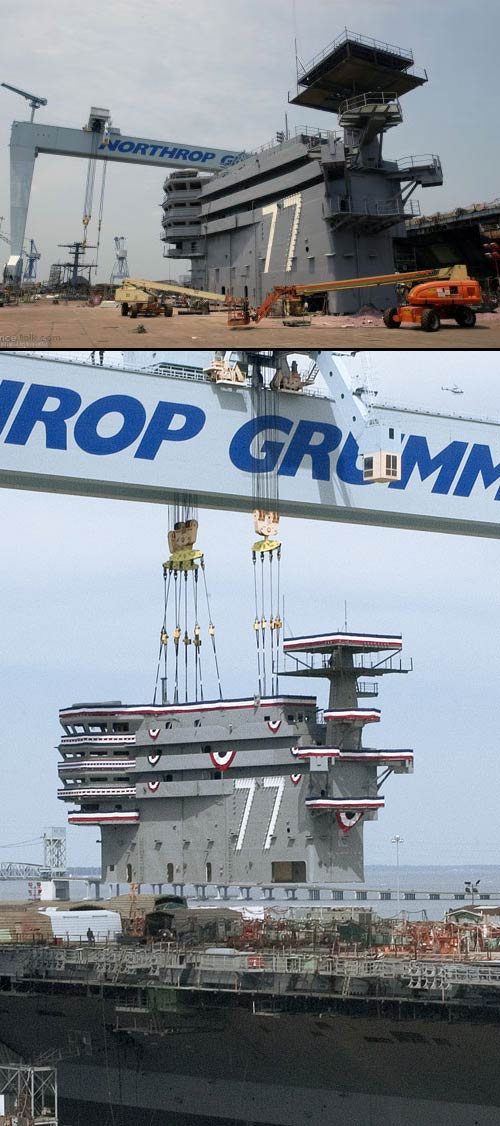Santaman said:
therealfoxbat said:
The big thing is the stress on the partially assembled framework. Something shaped like the Enterprise would collapse under its own weight *snip snip*
Why assume this? they're NOT building it out of steel or out of any other material we can use/think off today.

Actually, think about HOUSE CONSTRUCTION as a great example of why this form of construction is not only plausible and reasonable, but actually PREFERABLE (and also why you would prefer, as in TOS, to have shapes that have similar cross-sections all the way around, rather than with TNG-and-later which have shapes that don't share the same cross-section at any point around their rotation!).
Let's say you were going to build a Constitution-class primary hull. You'd build a series of flat frame sections (just like they do with house construction) and arrange them radially around a central "hub" structure. Theses flat "pie-wedge-cut" sections would be VERY STRONG initially. You'd then build up interconnections between these wedges... building "floor/ceiling" framing. And you'd have a VERY STRONG structure up-front, long before the first plating or internal structure was put into place.
That's how REAL construction is done today... for ships, for aircraft, and for houses. The "girder at a time" construction used in SKYSCRAPERS is really the exception, not the rule, yet that's the form of "steel construction" that most people think of when they think of that.
For the secondary hull... again, you'd do a series of flat "ring" shapes, string them up in the right sequence, then build the ceiling/floor structure to connect them together.
For the dorsal and pylons... well, you can figure THAT part out I'm sure.

Once the basic structural framework is in place, you'd start filling it in, and once it was largely filled in, you'd put on the outer skin.
It makes perfect sense to have the thing largely constructed that way (in an environment where the workers can operate without spacesuits) prior to lifting it into space.
I've always sort of assumed that surface-based construction was a practical necessity (ie, it was MUCH easier to do it this way and lift the components than to build them all in the vacuum of space!) until post-TOS.
Why Post-TOS? Well... you see the answer to this in Star Trek III. SPACEDOCK... or "Starbase One." It has a big interior space which is clearly zero-G, but which also (demonstrated clearly by the fact that you have spotlights inside which have VISIBLE BEAMS) has an internal atmosphere.
If you had something like Spacedock, you would have the best of both worlds... the ability to build in a "shirtsleeves" environment but in zero-gravity. And any maintenance that required a lot of outside-of-the-ship maintenance (say, for instance, that you'd been in a firefight without shields and the hull of your ship had been torn up), you'd dock in there because that's where they could most easily do the exterior work that would put your ship's hull RIGHT again.
It all really makes perfect sense, doesn't it?
Now, as for the supposed DISADVANTAGES of building on the ground... other than a humorous post a while back about finding dead leaves and squirrel droppings in the lower portions of the secondary hull, there really aren't any. They have antigravity, so lifting into orbit is TRIVIAL. (That can also be applied to your concerns about the structure "collapsing" can't it?). The ONLY issue that might really apply would be if you were concerned about the negative effects of atmosphere on the structural framework... steel components in orbit wouldn't rust, and there might be a little rust if you did the work right next to the San Francisco Bay.







 )
)